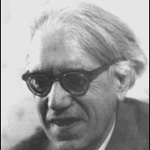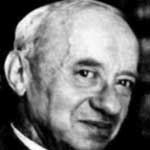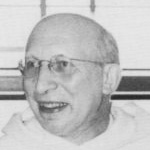
Evert W. Beth
The Birth Pangs of DLMPS
Paul van Ulsen
ILLC Amsterdam
DLMPS was born in 1955 — but its delivery involved complications, many of them surprisingly modern and relevant today. This note provides a brief history.
Several international societies for logic, methodology and the philosophy of science were founded between 1945 and 1950; the most important one was IUPS, the ‘International Union of Philosophy of Science’.1 Why was there such a need for large-scale organization after the Second World War? Logical groups existed already in pre-war times in Europe, but they were neither effective lobbies nor democratic associations. And in any case, logic and methodology were not recognized as independent disciplines, and sometimes seen as only semi-serious science. To achieve independence and status, two issues had to be resolved: one ideological, and one practical.
First, the ideology. The prominent Dutch and European logician-philosopher Beth held that logic and philosophy of science were closely connected; it was bad to separate them. Moreover, only a coalition of the two could achieve independence and university-wide influence. If logic remains dependent on others, e.g. the mathematicians, then it will be in a marginalized and disdained position,2 and contacts with philosophy of science and other sciences will be cut off.3 This was the reason for many people to avoid organizing within the International Mathematical Union (IMU). Only the already existing Association for Symbolic Logic (ASL) was a member of IMU. But on the other hand, nobody wanted to be dependent on the philosophers either, e.g. by joining the International Council of Humanistic Sciences. Beth was against every philosophical influence, and so was Tarski. In the view of the well-known historian of logic Bochenski:4 ‘We have to fight against both mathematicians and philosophers for its [formal logic’s] recognition.’
Now the practical politics. An internal association of logicians, not tied to the somewhat America-centric ASL, offered a lot of advantages as a forum, including scientific congresses, journals and books.5 Then as now, international recognition translated into professorships, influence, and money from national governments.6 After World War Two, the international community founded large bodies like the United Nations Educational, Scientific and Cultural Organization (UNESCO), which collected many important organizations under its aegis; in particular, the International Council of Scientific Unions (ICSU). Recognition by ICSU, i.e. UNESCO, meant status, national funding, and even some direct UN subsidies. No wonder that many attempts were made to reach these flesh-pots of Egypt.
In 1949, a Belgian and a Swiss philosopher, Dockx and Gonseth, founded IUPS. They wanted institutional societies as members, and sought ICSU membership. To get the required scientific weight, they needed the ASL, but they hoped to do so at a low cost in voting power. Not every member of the ASL wanted IUPS membership, but Tarski and Church were supporters — they saw it as an improvement of the position of logic all over the world. Church:7 ‘[ ] I have myself always been interested in an organization of international scope rather than one confined to the United States [ ].’ Even so, ICSU didn’t want small unions like IUPS as members. Therefore, they asked the International Union of History of Science (IUHS) — already an ICSU member — and IUPS to unite. IUHS, and especially its president Sergescu, did not like that, on the view that sharing means losing. But coerced by ICSU, they opened negotiations with IUPS.
Meanwhile there were changes in IUPS. The autocratic organization got a constitution and became more democratic. The pure logicians took control in 1952.8 Feys in 1952:9 ‘With the elimination of prof. Gonseth, Dockx and Bayer from the committee, the fundamental difficulties to the adhesion of the ASL to [IUPS] are removed. [ ] These three colleagues 1° considered [ ] [IUPS] as a tool to secure advantages from UNESCO for the profit of organizations or ideas of their own. 2° [ ] they were interested in rather literary forms of ‘Philosophy of Science.’’10 And thus, ASL became a member of IUPS in 1953.
But still there were negotiations with the unwilling IUHS. ICSU had a good solution: from 1955 on, it stopped the subsidy to IUHS. Another obstacle was removed by the death of Sergescu in 1954. IUHS surrendered, and the result in 1955 was the current International Union of History and Philosophy of Science (IUHPS), as we know it today. It was a union with two divisions, DLMPS for logic, methodology and philosophy of science, and DHS for history of science; each with its own council, and one governing committee for IUHPS as a whole.11 IUHPS immediately got entrance to ICSU.
Between 1955 and 1958 there was a period of consolidation, though occasional tremors shook the newly-formed coalition. In 1958 there was an international DLMPS congress in Brussels for a fresh constitution. As it happened, the secretary lost all minutes of the meeting. The European members Feys and Beth reconstructed the constitution unofficially in a back room, but passed it off as official afterwards. This relaxed style of management was frequently used by the Europeans, but it proved abhorrent to the more legalistic Americans. Tarski and Kleene were furious. Feys, Beth and others had to start all over again, and only after a series of juridical reconstructions, a compromise was reached. DLMPS installed a new committee,12 and finally there was time for science.



